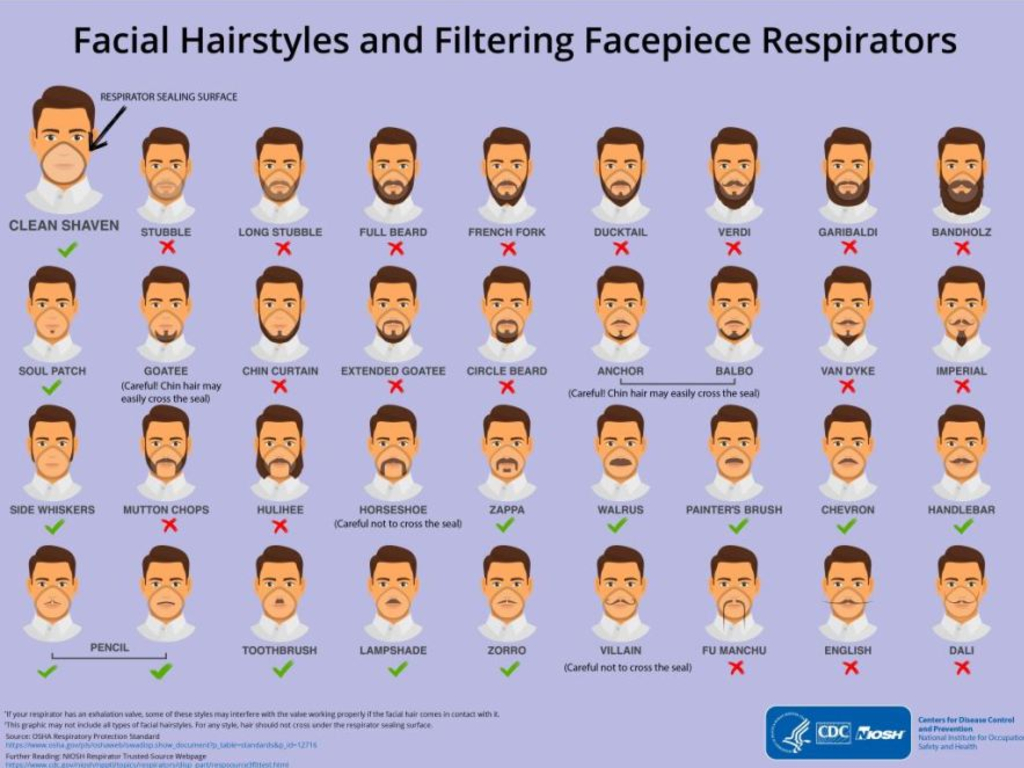An old Centers for Disease Control and Prevention (CDC) infographic with beard-shaving tips has re-emerged as coronavirus continues to spread globally.

Since the outbreak of the novel coronavirus, also known as COVID-19, face masks and special respirators have become common accessories, protecting against contracting the disease that has infected around 81,000 people worldwide.
Facial hair was once said to cause a problem in creating the perfect barrier. Though hair on the face can keep the exhalation valve on face masks and special respirators from working properly, according to KDVR-TV, the recommendations aren’t new.
The CDC released the colourful visual aid in 2017 to help people who sport beards alter the style to allow their face masks to sit more effectively.
Their infographic — which has picked up steam amid virus fears — displays dozens of styles compatible with masks, including side whiskers, soul patch, handlebar and, of course, clean shaven.
Simply put, hair shouldn’t cross the respirator-sealing surface, or the individual wearing the mask won’t be properly protected from outside germs.
Masks are more commonly worn than respirators, which cover the nose and mouth and should only be worn within workplaces, the CDC warns.

Get weekly health news
Respiratory viruses, the organization adds, typically happen among close contacts, within six feet.
Coronavirus has continued to spread globally. For the first time on Tuesday, the number of cases counted outside of China was higher than inside the country where it originated.
Worries over the ever-expanding economic fallout of the COVID-19 crisis multiplied, with factories idled, trade routes frozen and tourism crippled, while a growing list of countries braced for the illness to breach their borders.
Even the Tokyo 2020 Olympics, five months away, wasn’t far enough off to keep people from wondering if it would go on as planned.
“We don’t expect a miracle in the short term,” said Kianoush Jahanpour of the Health Ministry in Iran, where an official tally of infections of 139 was doubted by some who thought the problem was far bigger.
—







Comments